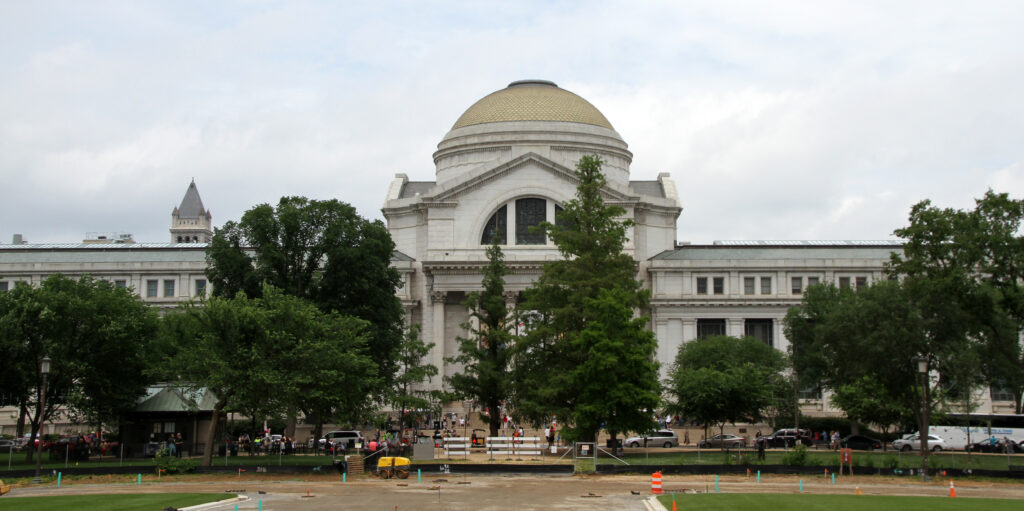The Smithsonian National Museum of Natural History houses one of the world’s most impressive dinosaur collections, drawing millions of visitors each year to its halls of prehistoric wonders. From towering Tyrannosaurus rex skeletons to delicate fossils of early feathered dinosaurs, the museum offers an unparalleled journey through the Mesozoic Era. This comprehensive guide explores the most notable specimens, the history of the collection, and the groundbreaking research that continues to shape our understanding of these fascinating creatures that ruled Earth for over 165 million years. Whether you’re planning your first visit or are a dinosaur enthusiast looking to deepen your knowledge, this tour through the prehistoric treasures of America’s natural history museum will enhance your appreciation of these remarkable animals and the scientists who have brought their stories to light.
The Deep Time Hall: A Modern Approach to Ancient Life

The Smithsonian’s dinosaur collection underwent a dramatic transformation with the 2019 opening of the David H. Koch Hall of Fossils – Deep Time exhibition. This 31,000-square-foot space represents a complete reimagining of how dinosaurs are presented to the public, placing them within the broader context of Earth’s history and evolution. Unlike traditional dinosaur exhibits that simply showcase impressive skeletons, Deep Time tells a comprehensive story of life’s evolution over 3.7 billion years, with dinosaurs featured as one fascinating chapter in Earth’s ongoing narrative. The hall’s innovative design allows visitors to follow a chronological path through time, witnessing how environmental changes have shaped life on our planet, including the rise and fall of dinosaurs. Interactive displays, cutting-edge research presentations, and thought-provoking exhibits about climate change create connections between prehistoric extinctions and current environmental challenges, making the dinosaurs relevant to contemporary discussions about Earth’s future.
The Nation’s T. rex: A Prehistoric Celebrity
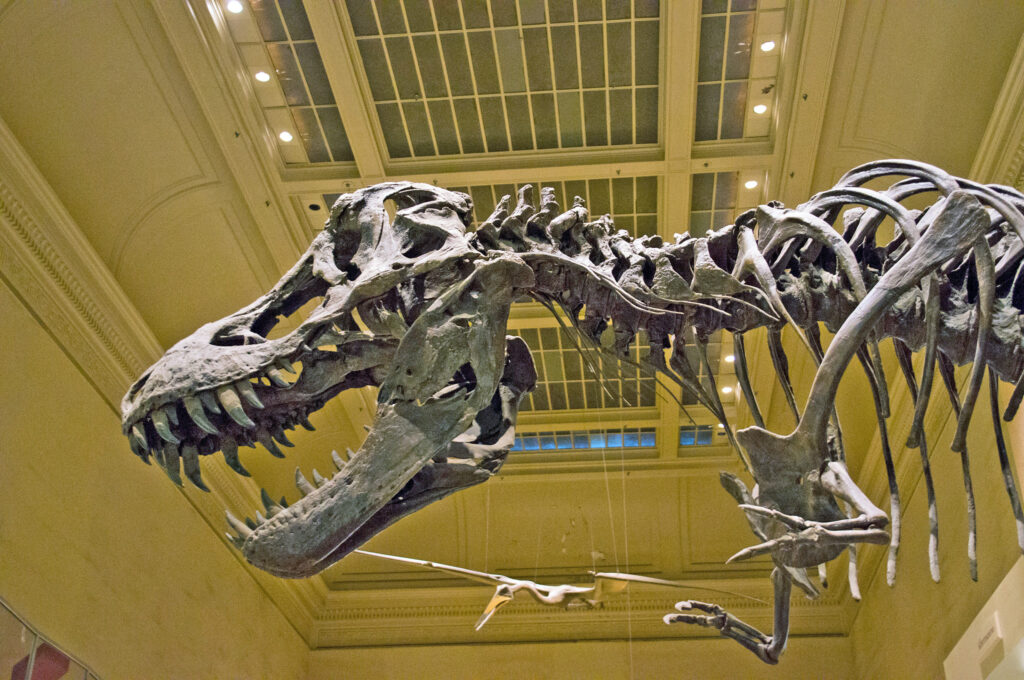
Standing as the undisputed centerpiece of the museum’s dinosaur collection is the “Nation’s T. rex,” one of the most complete Tyrannosaurus rex specimens ever discovered. Unearthed in 1988 by amateur paleontologist Kathy Wankel in Montana’s Fort Peck Reservoir, this remarkable fossil contains approximately 85% of the original skeleton, making it exceptionally valuable for scientific research. After decades at Montana’s Museum of the Rockies, this magnificent specimen was loaned to the Smithsonian in 2014 on a 50-year agreement with the U.S. Army Corps of Engineers, earning its patriotic nickname. The 66-million-year-old predator now dominates the Deep Time Hall, mounted in a dynamic pose that reflects current scientific understanding of how these animals moved. Visitors are often awestruck by the massive skull boasting 52 serrated teeth, some measuring up to eight inches long, capable of delivering bone-crushing bites with an estimated force of 7,800 pounds—enough to shatter the bones of its prey. The Nation’s T. rex provides not just an impressive display, but also serves as a valuable research specimen for ongoing studies into dinosaur growth, behavior, and evolution.
Hatcher the Triceratops: A Historic Restoration

Among the most beloved dinosaurs in the Smithsonian collection is the Triceratops skeleton affectionately known as “Hatcher,” named after John Bell Hatcher, who discovered its remains in Wyoming in 1891. This historic specimen holds a special place in paleontological history as it was the first nearly complete Triceratops skeleton ever mounted for public display. The three-horned herbivore, which lived during the late Cretaceous period approximately 68 million years ago, has been part of the Smithsonian’s collection for over a century, though it has undergone several remountings as scientific understanding of dinosaur posture has evolved. The current mount reflects modern knowledge about how ceratopsians (horned dinosaurs) stood, with legs positioned more directly under the body rather than splayed out like a lizard’s, as was incorrectly believed when it was first assembled. Hatcher’s impressive three-foot-long brow horns and distinctive neck frill make it instantly recognizable to visitors of all ages, while the battle damage visible on its frill—likely from confrontations with other Triceratops or predators—tells the story of a dinosaur that lived a challenging life in the prehistoric wilderness. Recent studies of this specimen continue to yield new insights about Triceratops growth and development, making Hatcher both a historic treasure and an ongoing source of scientific discovery.
The Diplodocus: A Dinosaur of Massive Proportions
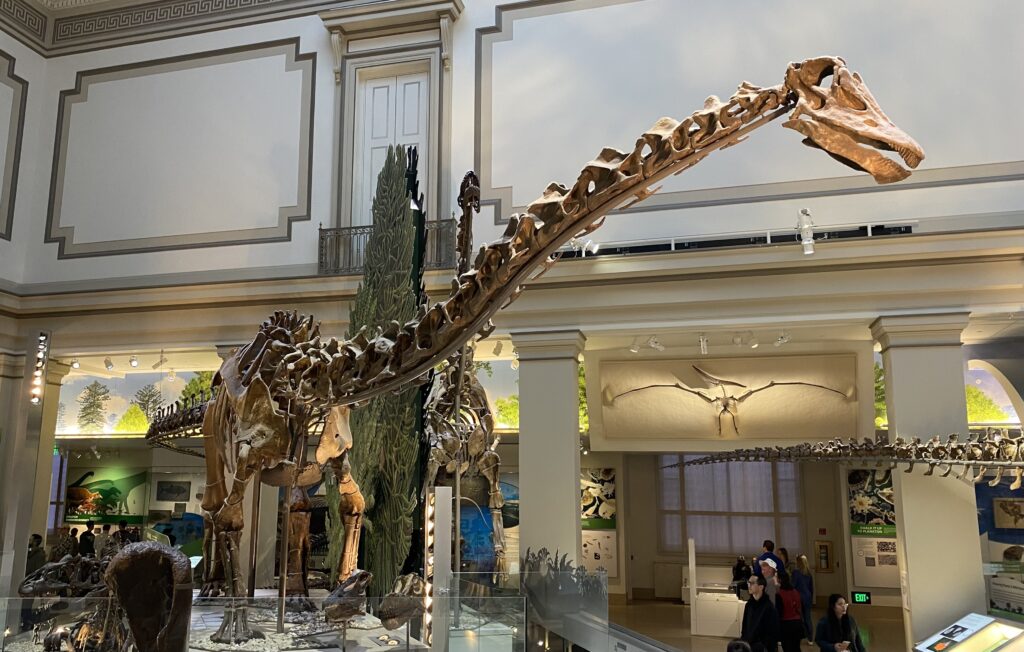
The Smithsonian’s Diplodocus longus skeleton stretches an impressive 87 feet from head to tail, offering visitors a tangible impression of the truly massive scale achieved by sauropod dinosaurs during the Late Jurassic period. This particular specimen, collected from the famous Morrison Formation in the western United States, represents one of the most iconic long-necked dinosaurs in the museum’s collection. Unlike some museum mounts that contain significant portions of cast material, the Smithsonian’s Diplodocus includes a substantial amount of original fossil material, making it particularly valuable to researchers and exceptionally authentic for visitors. The skeleton’s mounting reveals fascinating anatomical adaptations, including the characteristic whip-like tail that may have been used as a defensive weapon or for communication, and the elongated neck supported by lightweight, air-filled vertebrae that allowed these giants to browse efficiently on high vegetation. Paleontologists studying this specimen have gained important insights into how these massive animals functioned, including how their hearts pumped blood up their long necks and how their distinctive body plan evolved. The Diplodocus serves as a perfect illustration of the extreme body sizes reached during the Mesozoic Era, when favorable environmental conditions and evolutionary adaptations allowed dinosaurs to grow to dimensions unmatched by any land animals before or since.
Fossil Preparation Lab: Dinosaur Science in Action
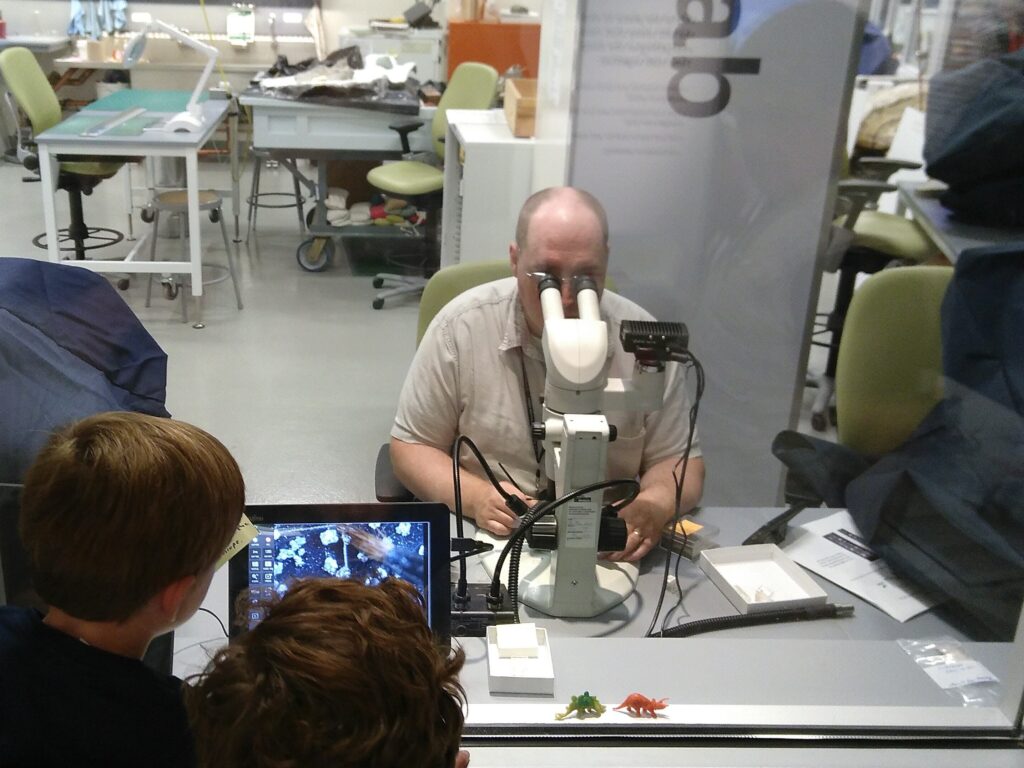
The Smithsonian’s FossiLab offers visitors a rare opportunity to witness paleontology in action, as museum scientists and trained volunteers meticulously prepare dinosaur fossils behind glass walls. This working laboratory makes the typically hidden processes of fossil preparation, conservation, and research visible to the public, demystifying how dinosaur remains transform from rough rocks to exhibition-quality specimens. Equipped with specialized tools ranging from dental picks and pneumatic micro-jackhammers to advanced microscopes, the lab technicians carefully remove the stone matrix surrounding delicate fossilized bones, often spending hundreds of hours on a single specimen. Visitors can observe real-time work on fossils from the museum’s vast collections, which include not only well-known dinosaurs but also newly discovered species still being described by science. The lab features interactive videos and scheduled demonstration times when staff explain current projects and answer visitor questions about fossilization processes, dinosaur anatomy, and emerging paleontological techniques. By showcasing the meticulous scientific work behind dinosaur exhibits, the FossiLab helps visitors understand that paleontology is an active, evolving science rather than a completed body of knowledge, highlighting how new technologies and discoveries continually reshape our understanding of prehistoric life.
Dinosaur Evolution and Diversity Exhibits

The Smithsonian’s dinosaur halls excel at illustrating the remarkable evolutionary diversity of dinosaurs throughout the Mesozoic Era, organizing specimens to demonstrate how different lineages adapted to various ecological niches over millions of years. Starting with early dinosaur relatives from the Triassic period, the exhibition traces the emergence of true dinosaurs and their subsequent radiation into countless specialized forms. Visitors can observe the dramatic differences between major dinosaur groups, from the massive, long-necked sauropods to the swift, bipedal theropods and the heavily armored, plant-eating ornithischians. Particularly noteworthy is the museum’s presentation of theropod diversity, showcasing the evolutionary connections between fearsome predators like Allosaurus and modern birds through a series of transitional fossils featuring increasingly bird-like characteristics. The exhibit emphasizes that dinosaurs were not a single type of animal but an incredibly diverse group that dominated terrestrial ecosystems for over 160 million years, evolving specialized adaptations for different diets, habitats, and lifestyles. Interactive displays highlight key evolutionary innovations such as feathers, which first evolved in dinosaurs for insulation and display before being co-opted for flight in their avian descendants. By presenting dinosaurs within their evolutionary context, the Smithsonian helps visitors understand that birds are living dinosaurs—the sole survivors of a once much larger and more diverse group.
Famous Fossils: The Smithsonian’s Gilded Age Treasures

The Smithsonian houses several dinosaur specimens of exceptional historical significance, collected during the famous “Bone Wars” of the late 19th century when rival paleontologists Othniel Charles Marsh and Edward Drinker Cope competed fiercely to discover and name new dinosaur species. These scientific feuds, while ethically questionable by modern standards, produced an unprecedented boom in dinosaur discoveries that formed the foundation of North American paleontology. Several specimens in the museum’s collection came directly from these legendary expeditions, including fossils of Stegosaurus, Camptosaurus, and Ceratosaurus recovered from the Morrison Formation. The museum’s partial Stegosaurus skeleton is particularly noteworthy as it represents one of the earliest specimens of this iconic plate-backed dinosaur ever collected, providing crucial information for the first scientific descriptions of the genus. These historic specimens carry dual significance: they are both scientifically valuable dinosaur remains and important artifacts from a pivotal period in the history of paleontology. The museum’s interpretation of these fossils acknowledges both their scientific value and their cultural context, explaining how early understanding of dinosaurs was shaped by the competitive atmosphere of early paleontological research and the limitations of 19th-century technology and scientific knowledge. These specimens provide a fascinating window into how our conception of dinosaurs has evolved alongside advances in scientific methods and theories.
Reconstructing Ancient Ecosystems: Beyond Isolated Skeletons

The Smithsonian’s approach to dinosaur exhibition goes beyond displaying isolated skeletons to recreate the ancient ecosystems in which these animals lived and interacted. Through carefully designed dioramas, murals, and contextual displays, the museum places dinosaurs within scientifically accurate reconstructions of Mesozoic landscapes, complete with contemporary plants, smaller animals, and environmental features. A standout example is the Late Cretaceous ecosystem display featuring Tyrannosaurus rex and Triceratops in their natural habitat of what is now Montana, approximately 66 million years ago. This exhibit is enriched with fossils of contemporaneous creatures, including pterosaurs, primitive mammals, insects preserved in amber, and fossilized plants that shared this dinosaur’s world. The environmental contextualizing extends to explaining prehistoric climate conditions, showing how different the Earth was during dinosaur times with higher sea levels, no polar ice caps, and significantly warmer global temperatures. These comprehensive ecosystem reconstructions help visitors understand dinosaurs as real animals adapted to specific environments rather than movie monsters or isolated curiosities. By demonstrating the complex web of relationships between dinosaurs and their environments, the museum illustrates how changes in climate and habitat influenced dinosaur evolution and eventually contributed to their extinction, creating powerful parallels to modern conservation concerns.
Growth and Development: The Lives of Young Dinosaurs

A fascinating section of the Smithsonian’s dinosaur exhibits focuses on dinosaur growth and development, showcasing rare juvenile specimens that reveal how these animals changed dramatically as they matured. Unlike mammals that generally maintain similar body proportions throughout life, many dinosaurs underwent remarkable transformations in their skeletal structure, with body proportions, skull shapes, and even defensive features changing substantially from hatchling to adult. The museum displays include juvenile specimens of Triceratops showing the early development of their distinctive frills and horns, which were proportionally different in young animals and gradually assumed their adult form as the dinosaurs matured. Particularly compelling is the museum’s presentation on nesting behaviors and parental care, featuring fossil eggs, nests, and hatchling remains that provide evidence that many dinosaur species, particularly those closely related to birds, invested significant energy in protecting and raising their young. Interactive displays explain how paleontologists determine the age of dinosaur fossils by examining growth rings in bones, similar to analyzing tree rings, which has revealed that some dinosaurs grew at astonishingly rapid rates compared to modern reptiles. This section helps visitors understand dinosaurs as living animals with complex life histories rather than static, fully-formed creatures, emphasizing the dynamic nature of dinosaur biology and behavior throughout their lifespans.
The Extinction Event: Understanding the End of the Dinosaur Era

The Smithsonian’s Deep Time Hall provides one of the most comprehensive museum explanations of the cataclysmic events that ended the age of dinosaurs 66 million years ago. Through dramatic displays and cutting-edge science, visitors experience the devastating aftermath of the Chicxulub asteroid impact, which struck Earth with the force of billions of atomic bombs, triggering global wildfires, tsunamis, and years of climate disruption. The museum presents compelling fossil evidence from the K-Pg boundary layer—a thin band of sediment rich in iridium and impact-shocked minerals that marks this catastrophic moment in Earth’s history, allowing visitors to touch the geological evidence of this extinction event. Particularly powerful is the exhibit’s presentation of extinction patterns, showing how the impact affected different animal groups unevenly, with some marine organisms, amphibians, and small terrestrial species surviving while all non-avian dinosaurs perished regardless of size or habitat. Interactive displays explain how the sudden darkness and cold following the impact devastated photosynthetic organisms at the base of the food chain, creating cascading effects through ecosystems worldwide. The exhibition thoughtfully connects this prehistoric mass extinction to current biodiversity concerns, helping visitors understand that while the dinosaur extinction was caused by an asteroid, today’s extinction rates are primarily driven by human activities, offering a sobering perspective on humanity’s impact on Earth’s biological systems.
Feathered Dinosaurs: Changing Our View of Prehistoric Life
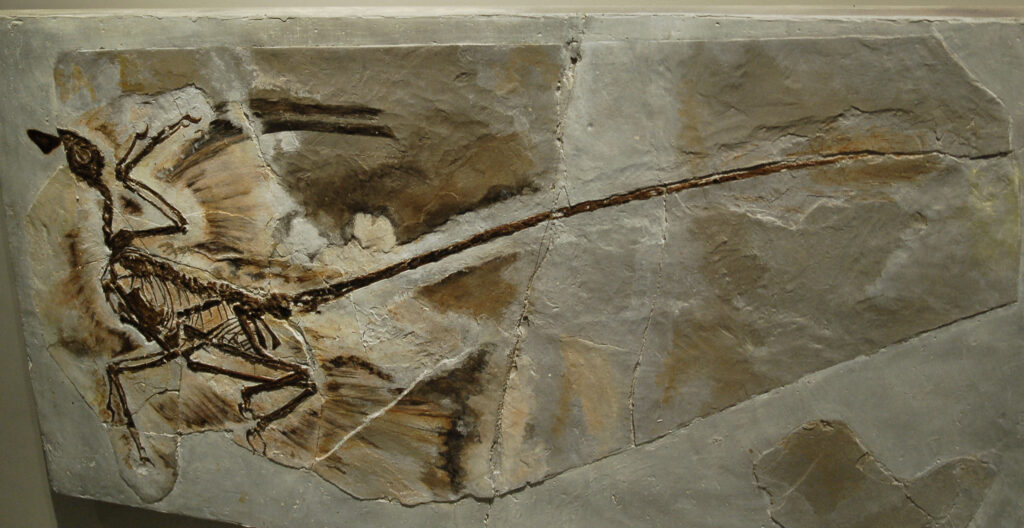
One of the most revolutionary aspects of the Smithsonian’s dinosaur exhibits is its presentation of feathered dinosaurs, showcasing the compelling evidence that many dinosaurs, particularly theropods, possessed feathers or feather-like structures. Through stunning models, fossil casts, and innovative digital recreations, the museum illustrates how our image of dinosaurs has been dramatically transformed by fossil discoveries from China, Mongolia, and elsewhere that preserve the delicate impressions of feathers and filamentous body coverings. Visitors can examine detailed reconstructions of feathered dinosaurs like Microraptor, a small four-winged dromaeosaur that had iridescent plumage similar to modern crows, and Yutyrannus, a relative of T. rex that was covered in primitive feathers despite its substantial size. The exhibits explain how feathers likely evolved initially for insulation and display purposes in dinosaurs, only later being adapted for flight in the lineage that would eventually give rise to birds. Interactive displays demonstrate the various types of feathers found in different dinosaur groups, from simple filamentous structures to complex flight feathers with asymmetrical vanes. By presenting the overwhelming scientific evidence for feathered dinosaurs, the Smithsonian helps visitors understand one of paleontology’s most significant paradigm shifts: the recognition that many of the scaly, reptilian dinosaurs depicted in older media were inaccurate, and that these animals were more colorful, dynamic, and bird-like than previously imagined.
The Science Behind the Displays: Paleontological Research
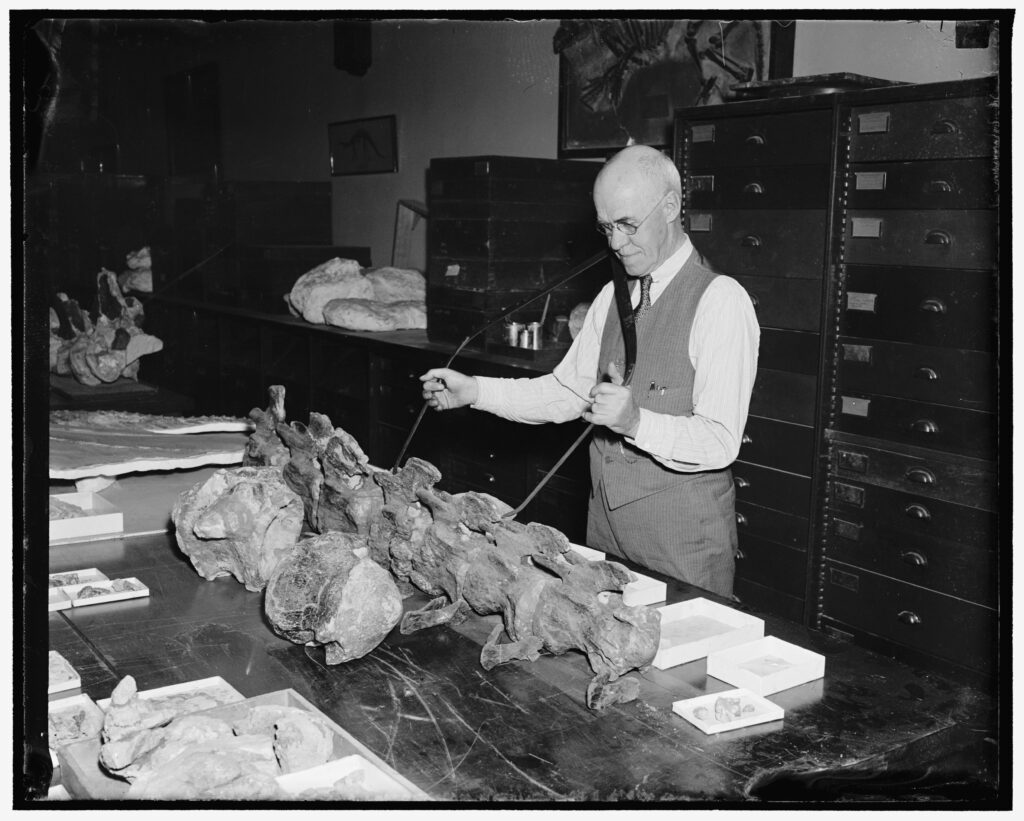
Behind every dinosaur specimen at the Smithsonian lies decades of scientific research conducted by the museum’s renowned paleontology department, whose ongoing work continues to reshape our understanding of prehistoric life. The exhibits highlight how modern paleontological investigations extend far beyond simply excavating and assembling fossils, incorporating advanced technologies like CT scanning, isotope analysis, and molecular studies to extract unprecedented details from ancient remains. Visitors learn how researchers use particle accelerators to identify traces of preserved proteins and pigments in fossils, revealing information about dinosaur coloration and soft tissue composition that was once thought irretrievably lost to time. The museum showcases how paleontologists collaborate with experts from seemingly unrelated fields—from aerospace engineers who help analyze dinosaur biomechanics to meteorologists who assist in reconstructing ancient climates—demonstrating the deeply interdisciplinary nature of modern dinosaur science. Particularly fascinating are displays explaining how microscopic analysis of bone structure reveals details about dinosaur growth rates, metabolism, and physiology, helping resolve long-standing debates about whether dinosaurs were more like reptiles or birds in their biology. Through highlighting active research programs and recent discoveries, the Smithsonian emphasizes that our knowledge of dinosaurs is not static but constantly evolving, with new finds and technologies regularly overturning established theories and opening new windows into the distant past.

